October 22-23, 2013
Before the National Council on U.S.-Arab Relations launched its first Annual Arab-U.S. Policymakers Conference in 1991, we asked numerous policymakers a single question:
“What bedevils you the most in your tasks to recommend effective policies?”
The answers differed only slightly from one person to the next. A common theme running through all the responses was, and I paraphrase, the following: The “W” questions are ones that policymakers deal with all the time. In and of themselves, they are difficult enough. They include:
“What” needs to be done;
“When” does it need to be done;
“Why” does it need to be done;
“Where” will we likely be if we do this or if we do not;
“Who” needs to do it; and, sometimes even,
“Whether” something needs to be done.
But the most difficult questions of all, the ones policymakers inform us they find most vexing, are “How” questions, for these, unlike most of the others, cannot be answered with a yes or no. Rather, the answer to each comes with a cost.
- Sometimes the cost is political, as when leaders of an administration’s political party or a government’s most important advisers or constituents are certain to put their foot down and say no.
- Sometimes the cost is financial, as when it is pointed out that there are no funds allocated, authorized, or appropriated for that which is recommended.
- Sometimes the cost lies in having to admit that the requisite competent human resources to implement a policy recommendation simply do not exist.
- Sometimes the cost is one of technology, equipment, and/or structures or systems that do not exist or, if they do, would have to be transferred from where they are to where they are needed more at what, arguably, is a prohibitively high cost in terms of time, effort, and money.
- Sometimes the cost is in credibility, as when an administration or government is on record as being strongly opposed to exactly what someone has just recommended as a solution or a palliative.
- Sometimes the cost is moral in the sense that it clearly violates the Golden Rule of Do Not Do Unto Others What You Would Not Have Others Do To You.
- Sometimes the cost will likely be a sharp downturn in the public approval rating of a president, premier, or head of state.
- Sometimes the cost might be a definite setback to the country’s image and the degree of trust and confidence it seeks to cultivate and maintain among its allies.
With this as background, context, and perspective, there follows a series of questions relating to contemporary Arab-U.S. relations. The questions are ones that policymakers on one side or another, and sometimes both sides, grapple with daily. They are provided in the spirit of a public service. To whom? To not only the policymakers entrusted to improve Arab-U.S. relations and not make them worse. They are also offered as food for thought. Again, to whom? To intellectuals, scholars, teachers, students, analysts, investment strategists, specialists in public policy research institutes, and many others eager to enhance their knowledge and understanding of the state of play in the relations between the United States and the Arab world, and who want to improve these relations.

Dr. John Duke Anthony
Founding President and CEO
National Council on U.S.-Arab Relations
Eight Categories of “ HOW” Questions
GULF COOPERATION COUNCIL: ROLE IN REGIONAL DYNAMICS
GEO-POLITICAL DYNAMICS: SYRIA, LEBANON, IRAQ, & IRAN
U.S.-ARAB BUSINESS, FINANCE, AND HUMAN RESOURCE DEVELOPMENT
GEO-POLITICAL DYNAMICS: EGYPT & ARAB NORTH AFRICA
ARAB-U.S. RELATIONS: VIEWS FROM THE ARAB MEDIA
U.S.-ARAB ENERGY COOPERATION
How can the U.S. achieve “energy independence” when it remains the world’s largest oil consumer and importer?

How, if at all, is the growing trend for renewable energy (solar, wind, etc.) and fracking in the U.S. affecting Gulf oil exports and what, if any, effect will this likely have for the future economy of the region?
How, and if possible cite examples of, are the GCC states progressing in their research and development of alternative energy sources?
How, if at all, can projects like the UAE’s Masdar — a new and entirely carbon-free urban center in Abu Dhabi — serve as models for future construction and conservation best practices?
How are the rapidly growing energy demands of China and India likely to affect the global energy mix and prices for U.S. consumers?
How, taking into account differing American and Arab analyses and effects, is one to assess the impact on the recent economic recession, if any, of the energy component and specifically the policies of any of the Arab oil producers’ policies?
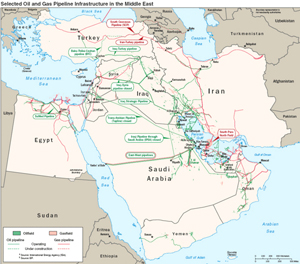
How soon, factoring in various Arab viewpoints, is the recurring American official emphasis on the development of alternative fuels likely to begin to make a significant impact on the overall U.S. economy — and, when and if it does, what impact is it likely to have on relations between the Arab oil producers and the U.S.?
How plausible is the view that Arab, U.S., and other international energy market dynamics have changed fundamentally with additional sources of supply coming on-stream, in response to increased demand, such that prices are likely to stabilize?
How will the re-emergence of U.S. domestic shale oil and gas affect the energy production picture among major energy suppliers in the Arab world and elsewhere, including the U.S., and how will it likely affect global energy markets and prospects for economic growth?
U.S.-ARAB DEFENSE COOPERATION
How might an American, Israeli, or combined attack on Iran affect U.S. interests and personnel in the Gulf region?
How can the U.S. best devise a strategy toward the Arab world in pursuit of legitimate American national security interests?
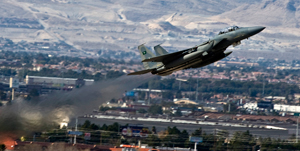
How likely is it that the GCC nations will develop a unified plan to respond to threats and military actions from Iran on their own or within a GCC framework?
How do military sales by U.S. defense contractors to Arab countries impact the economies of the United States and Arab countries?
How likely, if at all, can one realistically expect increasing U.S. energy production to impact military sales by American defense contractors to Arab nations?
How can the U.S. better work with its Arab partners, friends, and allies to assist with joint defense training and security planning?
How can the U.S. address the charge made by many in the Arab world who view various U.S. policies towards Israel-Palestine, Syria, Iran, Iraq, Afghanistan, and Pakistan to be provocative and unjust, and as great a threat, if not a greater threat, to regional peace, prosperity, stability, and security than regionally-based purveyors of extremism and terrorism?
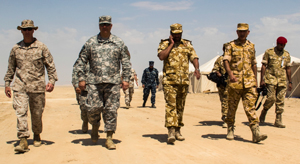
How can the U.S. surmount, counter, or proceed effectively in terms of its national interests against, on one hand, foreign competition, and, on the other, restrictive American laws on, or Congressional opposition to the sales of select advanced U.S. defense technology, structures, and/or systems to its Arab friends, partners, and allies?
How can the U.S. realistically implement a strategy toward the Arab world that is accepted and respected as such, when what it projects to much of the Arab world and elsewhere is viewed regionally and globally not as a strategy but, rather, an image of being short-term, reactive, and reliant upon an implied or explicit use of force?
How can the U.S. effectively increase the level of budgetary support for the Arab components of its International Military Education and Training program — especially those aspects of it that pertain to existing and emerging Arab defense leaders, many of whom are keen to engage their American counterparts and be trained in accordance with U.S. standards regarding security assistance and the principle of civilian control over a nation’s armed forces?
How can the U.S., with its Arab partners, friends, and allies, contribute to a resolution of the crisis in Syria?
How can the U.S. implement its counterterrorism strategy while balancing its international obligations to respect the national sovereignty, political independence, and territorial integrity of other nations?
GULF COOPERATION COUNCIL: ROLE IN REGIONAL DYNAMICS
How likely is the GCC to transform itself into a Union based on its members’ common culture and identity, commitment to free trade, and shared GCC security concerns, and the member-states’ reliance upon a U.S.-led network of Great Power Protectors against intimidation or attack?
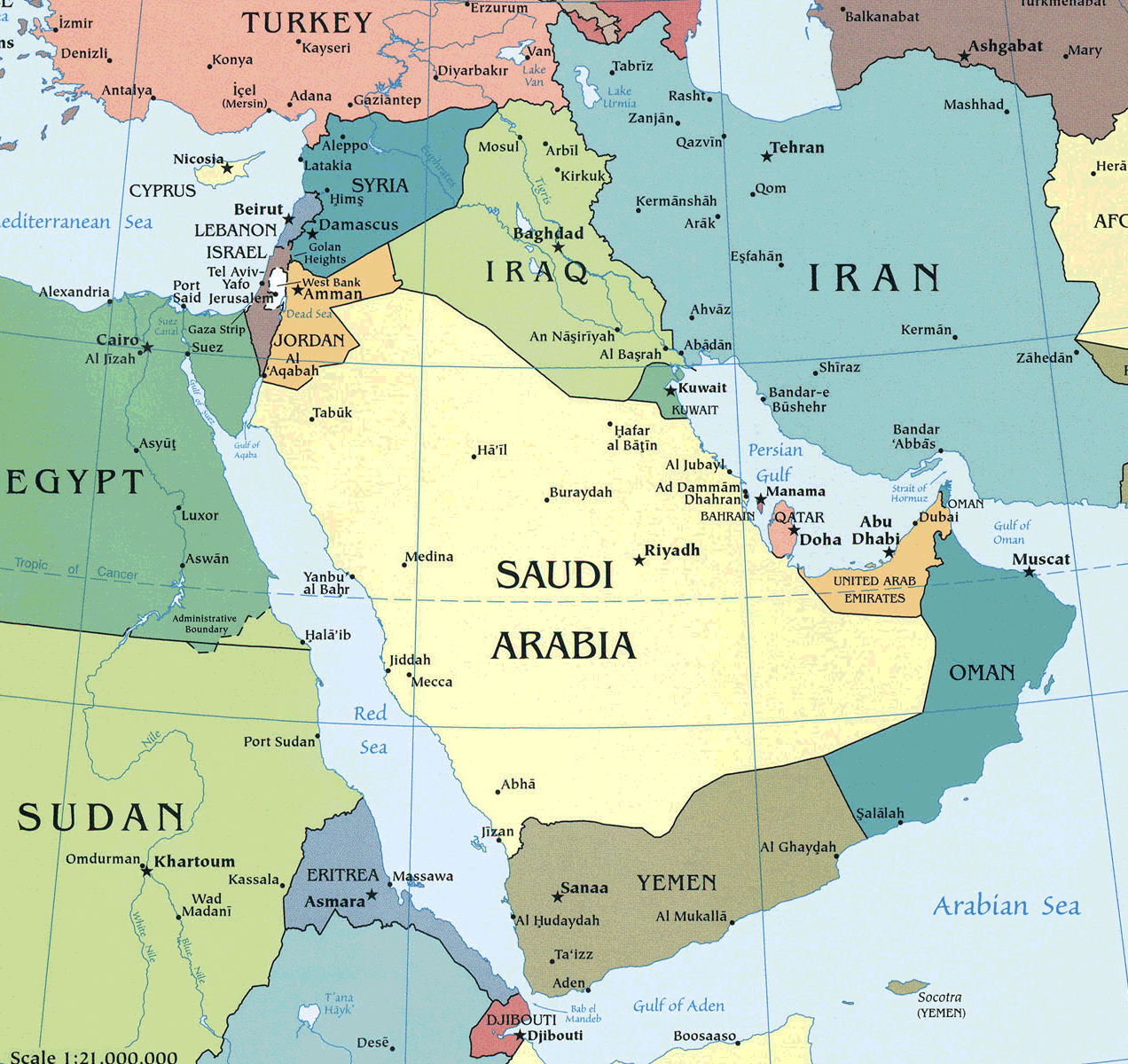
How, were significantly greater progress toward a greater GCC Union to be realized, might this translate into greater defense cooperation, economic prosperity, and influence in the international community in spite of periodic setbacks and various differences among its six members?
How can the United States contribute to mending specific GCC country-Iran tensions in a practical way?
How might an American-Iranian détente possibly impact U.S.-Arab interests in the Gulf and beyond?
How, if at all, is increased U.S. production of oil and natural gas likely to affect American economic, political, and military ties with the Gulf region?
How, and under what likely set of circumstance, might the GCC benefit from gaining new members, such as Jordan and Morocco?
How might the expansion of GCC membership bring with it more negatives than positives?
How, if at all, has the U.S. strategic relationship with the GCC countries impacted its relationship with Israel?
How can the GCC achieve greater economic diversity over the coming decades based on a unified strategy while the value of hydrocarbon and petrochemical exports remains so lucrative and, to date, the existence of other comparatively advantageous manufacturing enterprises and additional strategic mineral resources remains so few or limited?
How, in the coming decade, will the GCC deal with Yemen as its oil and water resources are expected to be depleted by as early as 2020?
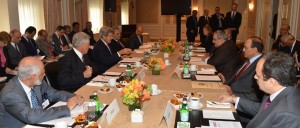
How do the GCC countries perceive a military strike by the United States or Israel against Iran, given the views of many that such an attack would likely put multiple GCC countries and their respective infrastructures in danger?
How, from the opposite perspective, might one assess the likely strategic and military implications for the GCC region were Iran to acquire the means to produce and deliver a nuclear weapon?
How might the United States be expected to react if the United Nations General Assembly, the League of Arab States, and/or the GCC countries were to accentuate their demand that the Middle East be a nuclear-free zone in light of Syria’s recent decision to destroy its chemical weapons?
How can the United States work toward implementing the goals of the most recent U.S.-GCC strategic dialogue?
How might regional global economic interests benefit from upcoming plans to implement unified GCC passenger and freight railways?
THE PALESTINIAN FUTURE
How could the Palestinians secure access to greater natural and agricultural resources then those currently under their possession and control?
How, if at all, could the Palestinians possibly harness additional resources to rebuild the Palestinian economy in a way that could be expected sustain possible statehood?
How can Arab states contribute more effectively than they have thus far to Palestine’s effort to secure international recognition as an independent state?
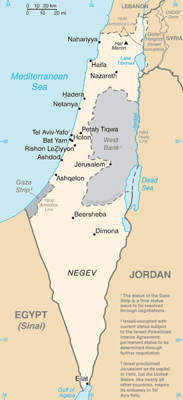
How, realistically, can a two-state solution be reached between Israel and Palestine given the opposition of large numbers of Israelis, on one hand, and on the other, preference among a growing number of Palestinians for a single state of Israelis and Palestinians?
How can the United States guide or otherwise assist the peace negotiations between Palestinians and Israelis?
How practical are Secretary of State Kerry’s goals under the current conditions?
How can the United States play an appropriate role in its policies toward Israel that incentivizes it to change the status quo and agree to a sustainable peace settlement with the Palestinians?
How can the various factions of the Israeli lobby in the United States be persuaded that the status quo is not sustainable and a mutually agreed upon peace settlement is in the best interest of all the parties, and for that reason alone, simply must be reached?
How, if at all, are the current rounds of Israeli-Palestinian peace talks going to affect the U.S. role in the region if at all?
How might U.S. interests change if said peace talks were to amount to anything significant?
How can the people of Gaza and the West Bank address the growing chasm between their two leaderships with the aim of creating a unified Palestinian state?
How would progress toward an Israeli-Palestinian agreement likely affect conflicts in neighboring countries such as Egypt, Jordan, Lebanon, and/or Syria, and the overall U.S. reputation in the region?
GEO-POLITICAL DYNAMICS: SYRIA, LEBANON, IRAQ, & IRAN
How might the United States best effectively engage Iran’s newly elected President Rouhani in constructive dialogue?

How could the United States be expected to accommodate the possible nuclear weapons ambitions of Iran without inciting a regional nuclear arms race?
How, if at all, might Rouhani’s election be expected to affect Iranian policies and actions toward the conflict in Syria?
How might one best proceed to resolve Syria’s civil war?
How have UN and United States sanctions affected Iran?
How realistic is it, given that Iran’s seven Arab neighbors all have their own issues with Tehran, to expect that the United States will likely be able to reset its relations with the Islamic Republic without upsetting or impinging unduly upon the interests of Iran’s Arab neighbors?
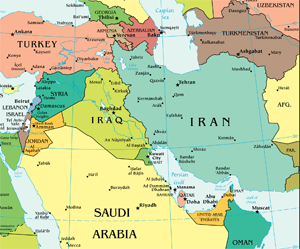
How, taking into consideration Arab viewpoints and interests, might the restoration of Iraq’s potentially robust energy industry and the process of granting concessions to foreign oil companies be expected to proceed with the country facing the likelihood that the near- and longer-term security situation there may remain uncertain for the immediately foreseeable future?
How soon, if at all, can the United States be expected to disprove among various GCC country government leaders and international strategic analysts farther afield that “The United States attacked Iraq and Iran won — without firing a single shot or shedding a drop of blood”?
How will Syria’s neighboring Arab countries balance their respective citizens’ national interests while providing for the needs of the hundreds of thousands of refugees and internally displaced peoples resulting from the conflict in Syria?
U.S.-ARAB BUSINESS, FINANCE, AND HUMAN RESOURCE DEVELOPMENT
How does U.S. foreign policy in the Arab world affect the competitiveness of American companies and their ability to secure contracts in the region?

How important is a strong U.S. business presence in the Arab world in countering other countries’ economic and commercial influence?
How will the skyrocketing number of graduates, among them particularly women, likely affect labor markets in the Arab countries?
How, as domestic economies like Saudi Arabia’s continue to grow and consumers begin to utilize more of their own oil, what will be some of the unforeseen effects on local electric power plants, water desalination facilities, manufacturing enterprises, service industries, in addition to the presumed consequent drop in overall levels of their foreign oil exports? What might be some of the unforeseen impacts on their oil importers?
How can sovereign wealth funds be used to address domestic challenges of unemployment, access to the labor market, the provision of affordable housing, the ability of youth to marry and raise a family, and/or raise salaries across the board?
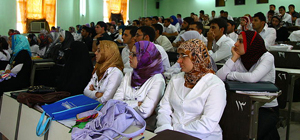
How are women spurring innovation in the Arab world?
How can one best analyze the nature and extent of educational reform in the Arab world as a whole as it pertains to the status and role not just of women but also of men?
How stable are the long-term prospects of the GCC countries in light of their respective considerable educational, employment, and economic challenges?
GEO-POLITICAL DYNAMICS: EGYPT & ARAB NORTH AFRICA
How viable is the incremental approach to change in which governmental and political power are being redistributed through constitutional reform and amongst coalitions involving militaries [Egypt], political parties [(Iraq), Morocco, Tunisia, (Yemen)], and new political positions [Morocco] in comparison to other kinds of change such as top down reform seen in some Arab monarchies or revolutions?
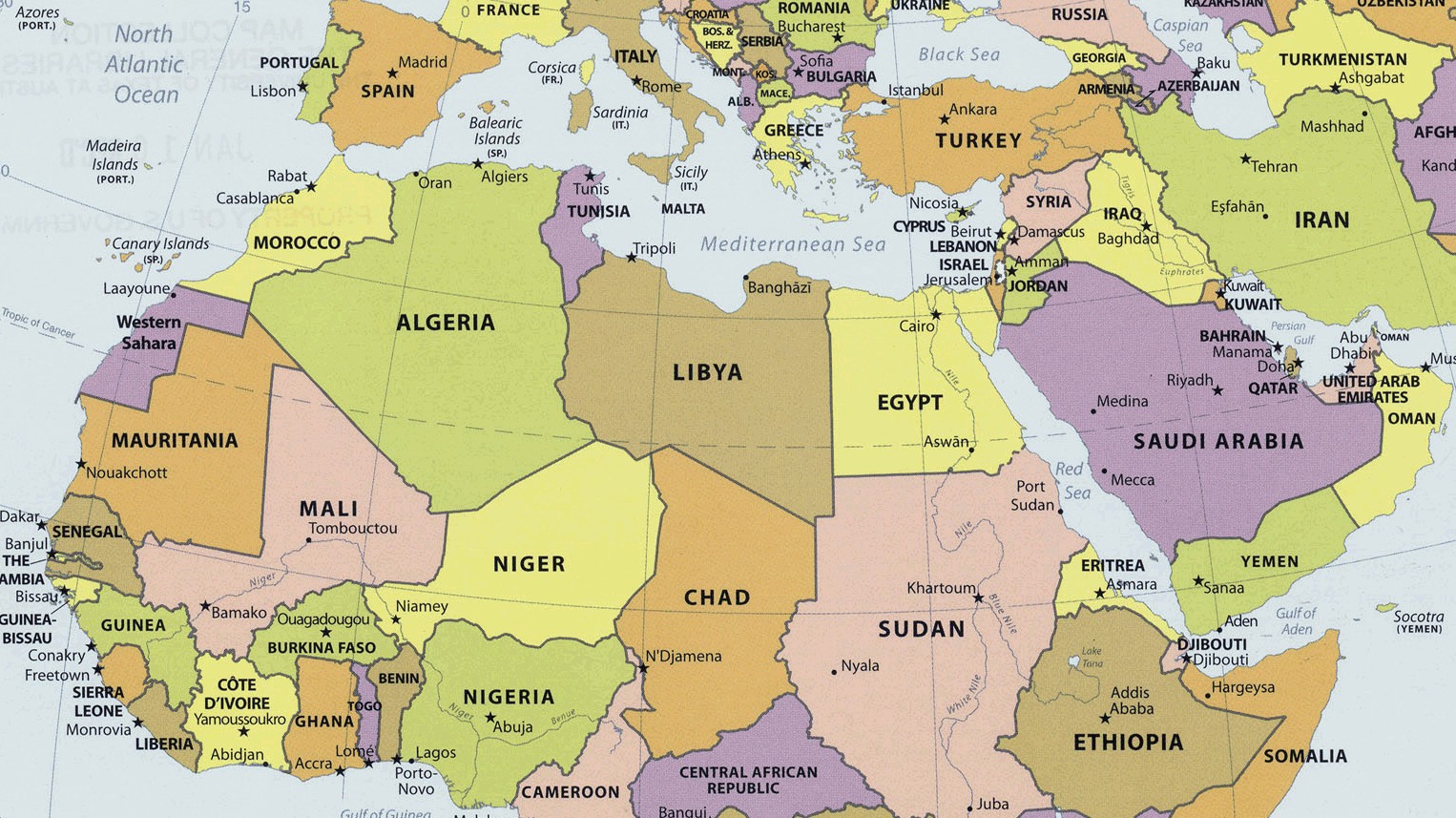
How can the U.S. effectively assist Libya in the demobilization of its remaining militias in the country while not making the Libyan government appear to be a puppet of the U.S. government’s campaign against, among others, al-Qaeda, Islamic Jihad, Jabhat al-Nusra, al-Shabab, and the Islamic State of Iraq and the Levant?
How can the U.S. play a role in maintaining stability in Egypt?

How can the GCC countries contribute more effectively than they already have to development and stability in Arab North Africa?
How, if at all, can the concessions and reforms implemented by Moroccan King Mohammed VI serve as a model for other countries in the region?
How, given the sentiments of many Arab North Africans and Egyptians toward U.S. domestic politics and foreign policy in the region, inclusive of America’s educational system, cultural exchanges, and study abroad programs going in both directions, be utilized as a tool for diplomacy?
ARAB-U.S. RELATIONS: VIEWS FROM THE ARAB MEDIA
How, regarding the Arab world as a whole, do American policy decisions affect U.S. media perceptions and/or do media perceptions affect policy decisions?
How have such negative perceptions curtailed what might have been or prominent policy-making input and comment by Arab-Americans and Muslim-Americans?
How, with such examples as post-Mubarak Egypt, pre-U.S. invasion of Iraq, Hamas’ electoral victories in Palestine, periodic arms sales to Saudi Arabia, and/or pictures of children victims of Syria’s civil war, as cases in point, can the cultural misunderstandings between Americans, Arabs, and Muslims be decreased worldwide, and particularly within the major parts of government interaction?
